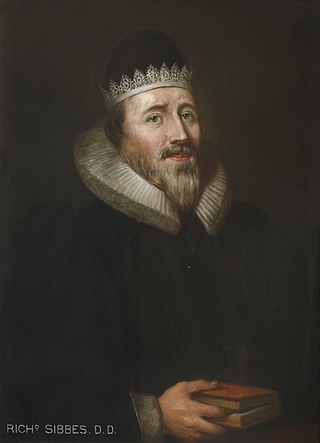Related Research Articles

John Venn, FRS, FSA was an English mathematician, logician and philosopher noted for introducing Venn diagrams, which are used in logic, set theory, probability, statistics, and computer science. In 1866, Venn published The Logic of Chance, a groundbreaking book which espoused the frequency theory of probability, arguing that probability should be determined by how often something is forecast to occur as opposed to "educated" assumptions. Venn then further developed George Boole's theories in the 1881 work Symbolic Logic, where he highlighted what would become known as Venn diagrams.

Richard Sibbes (1577–1635) was an Anglican theologian. He is known as a Biblical exegete, and as a representative, with William Perkins and John Preston, of what has been called "main-line" Puritanism because he always remained in the Church of England and worshiped according to the Book of Common Prayer.

Bangor Cathedral is the cathedral church of Bangor, Gwynedd, Wales. It is dedicated to its founder, Saint Deiniol.
Thomas Bucknall Lloyd was Archdeacon of Salop from 1886 until his death.
Richard Newcombe was an Anglican priest.
George Clarke (1793-1871) was an Anglican priest: most notably Archdeacon of Antigua from 1850 to 1871.
Edward Woolnough was Archdeacon of Chester from July 1865 until his death.
John Warren (1767-1838) was Dean of Bangor from 1793 to 1838.
Hugh(e) Hughes (1709–1753) was Dean of Bangor from 1750 to 1753.
John Jones, D.D. was Dean of Bangor from 1727 until 1750.
John Howorth, D.D. was a 17th-century priest and academic.

Richard Fisher BelwardD.D. FRS was an academic in England in the second half of the 18th century and the early years of the 19th. He was born Richard Fisher, adopting the name Belward in 1791.
William Buckenham was a 16th-century priest and academic.
William Colman, D.D. was a priest and academic in the second half of the eighteenth century.
William Sowode, D.D. was a priest and academic in the first half of the sixteenth century.
William Cradock was an Irish Anglican priest in the 18th-century.
John Hills, D.D. was a priest and academic in the late 16th and early 17th centuries.
William Mostyn was a 17th-century Welsh Anglican priest.
Simon Lloyd was a Welsh Anglican priest in the 17th century.
Kennedy J. P. Orton was a British chemist. Initially he studied medicine at St. Thomas' Hospital, but there he became interested in chemistry and moved to St. John's College, Cambridge. He then obtained a Ph.D. summa cum laude in Heidelberg under Karl von Auwers, before working for a year with Sir William Ramsey at University College, London. He was then lecturer and demonstrator of Chemistry at St. Bartholomew's Hospital, before in 1903 being appointed Professor of Chemistry at University College of North Wales, Bangor, where he headed the department until his death. He was elected a Fellow of the Royal Society in 1921.
References
- ↑ "Gentleman's Magazine and Historical Review", Volume 63, Part 2 p1093
- ↑ Alumni Cantabrigienses: A Biographical List of All Known Students, Graduates and Holders of Office at the University of Cambridge, from the Earliest Times to 1900, John Venn/John Archibald Venn Cambridge University Press > (10 volumes 1922 to 1953) Part I. 1209–1751 Vol. iii. Kaile – Ryves, (1924) p96